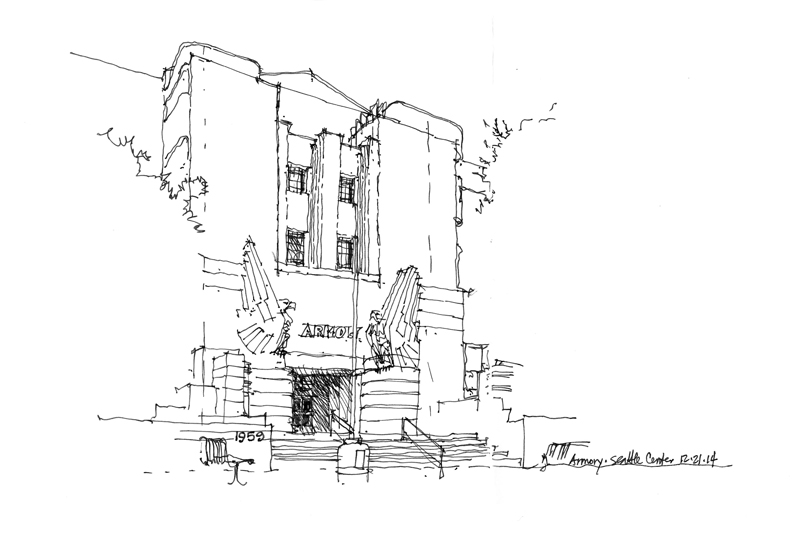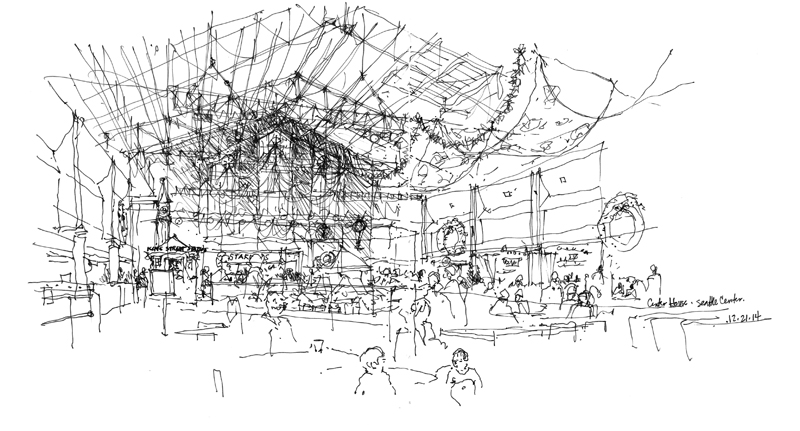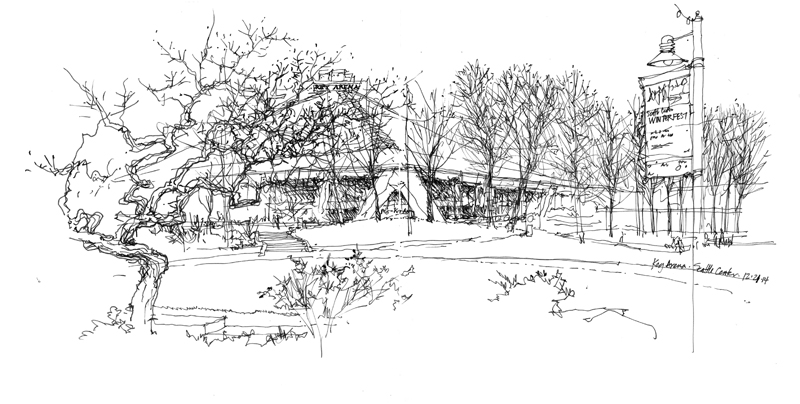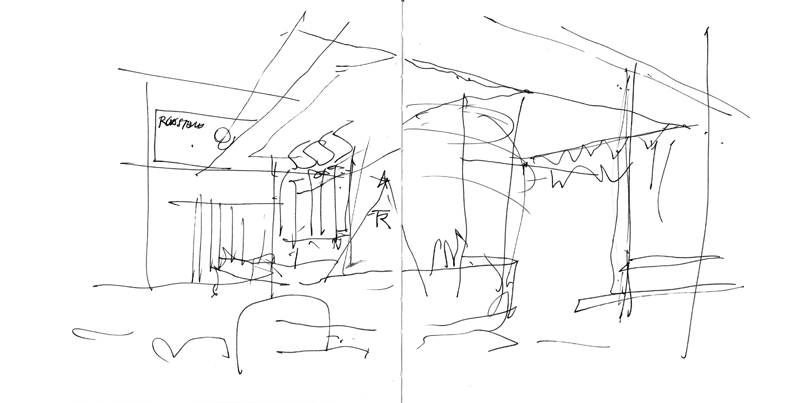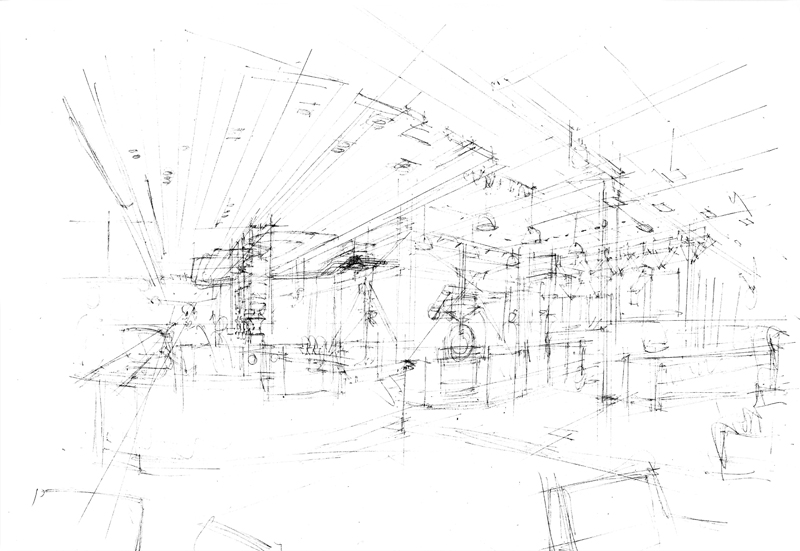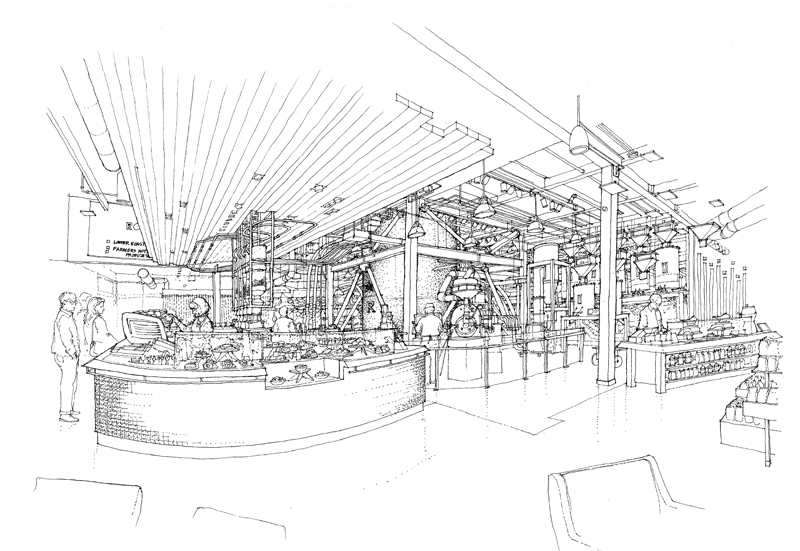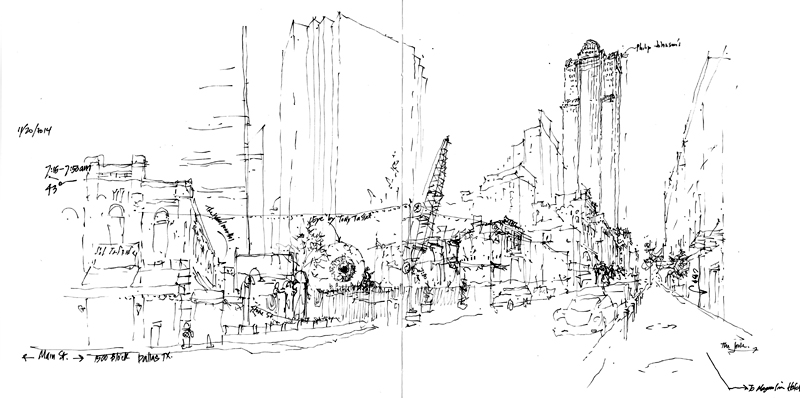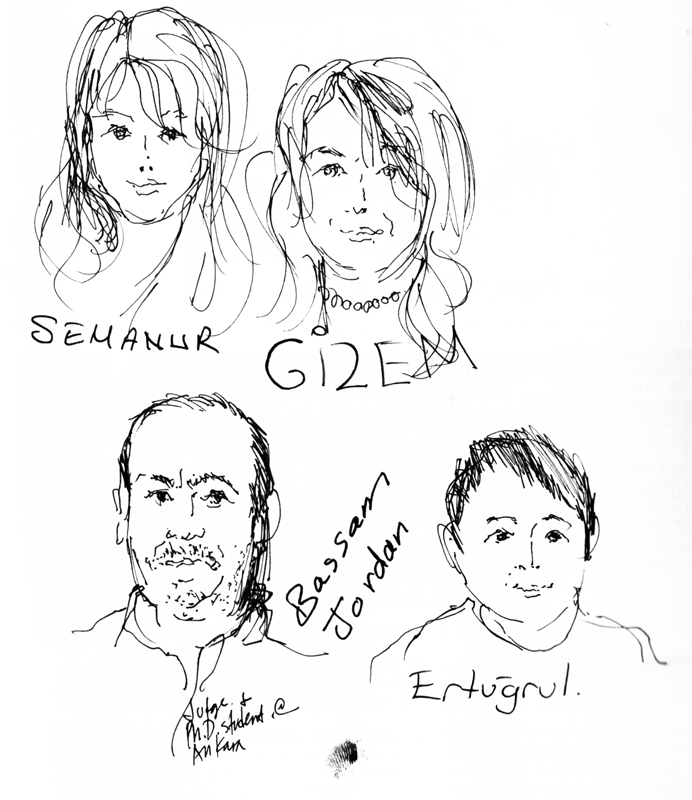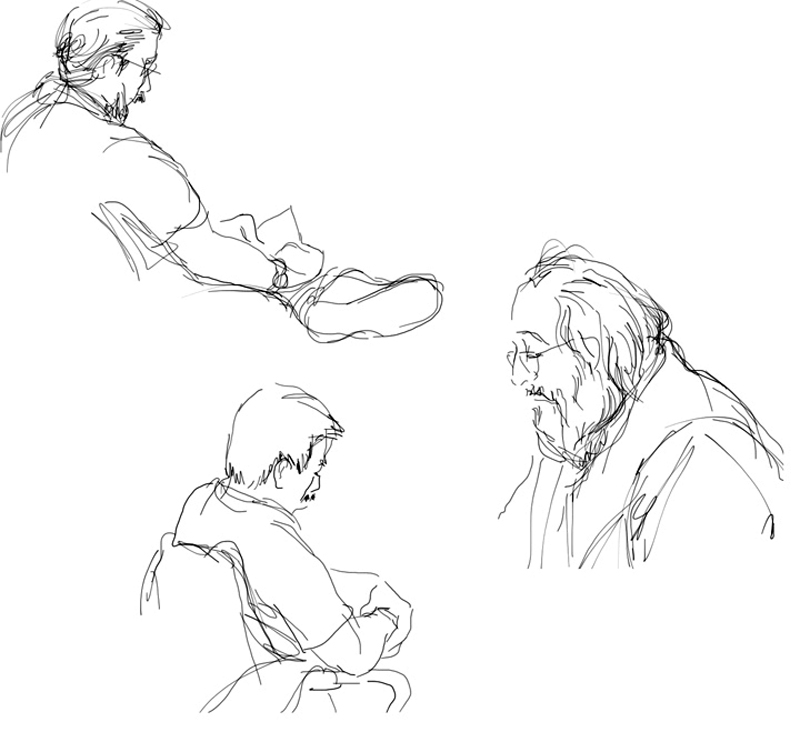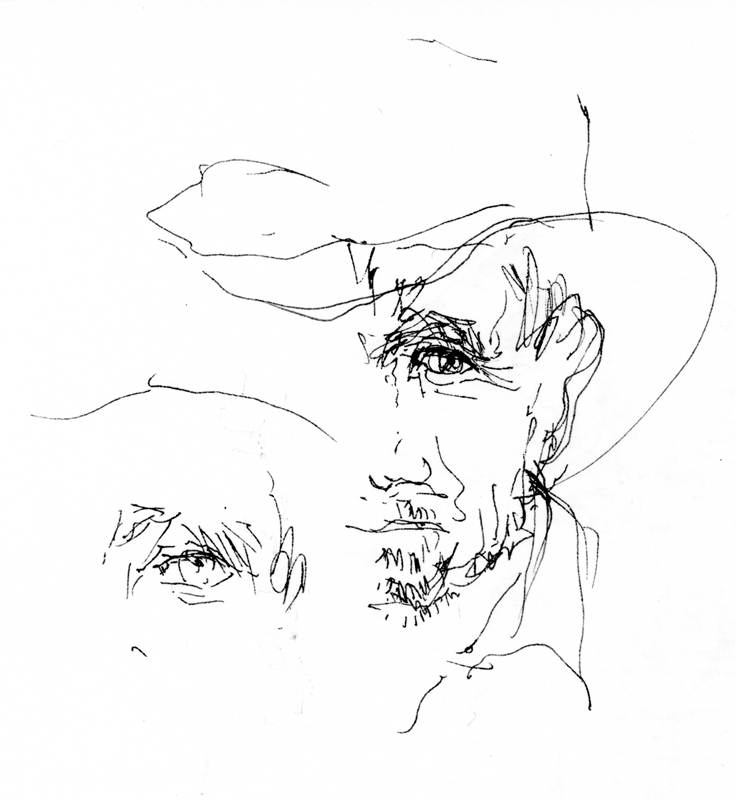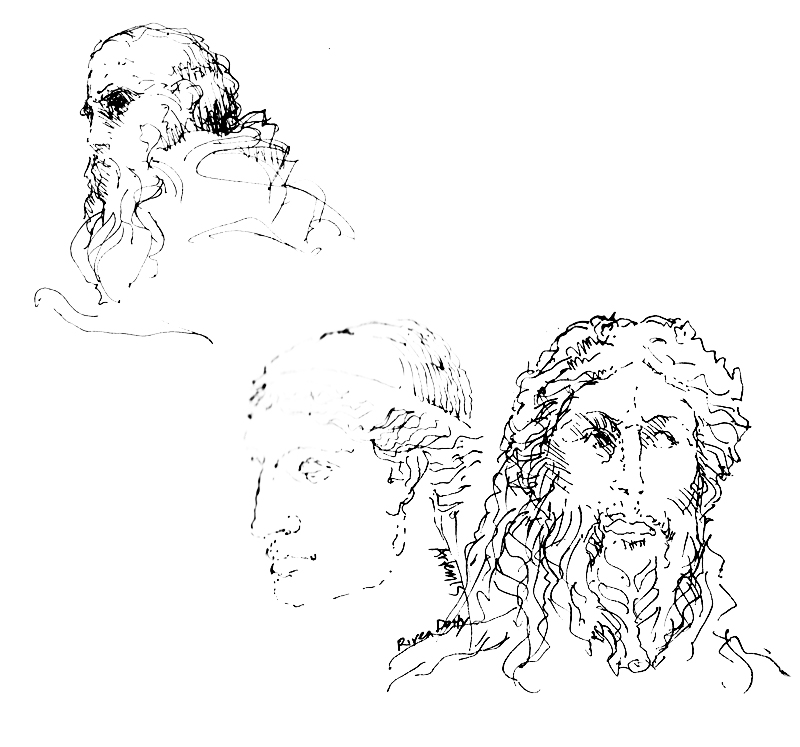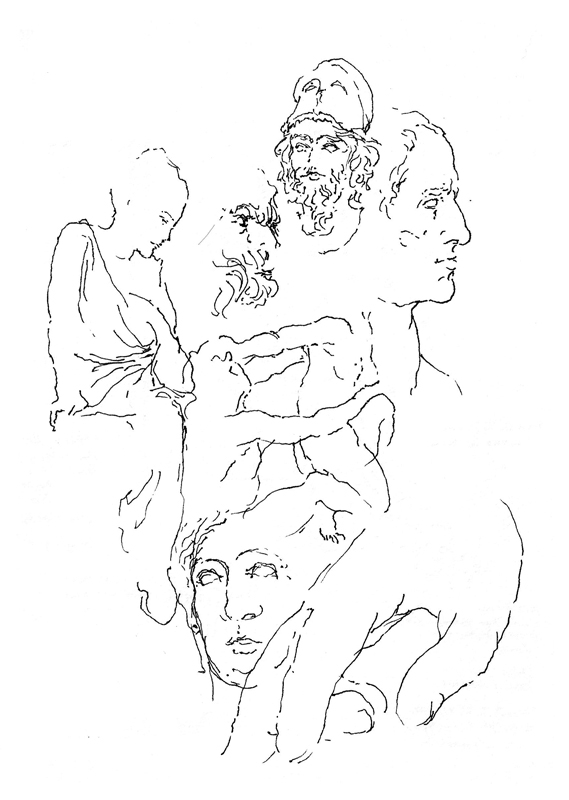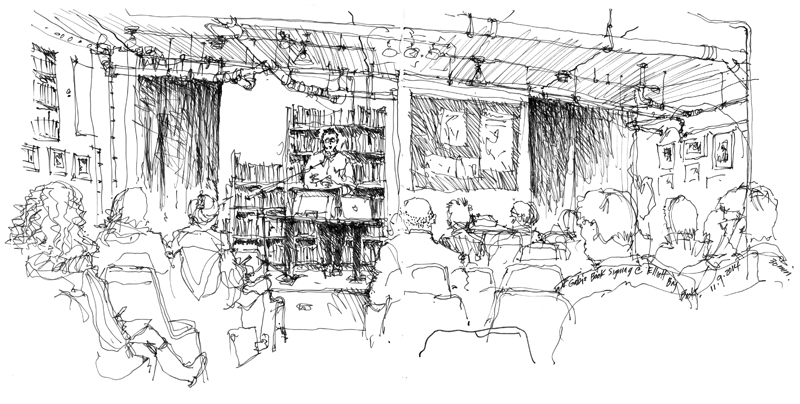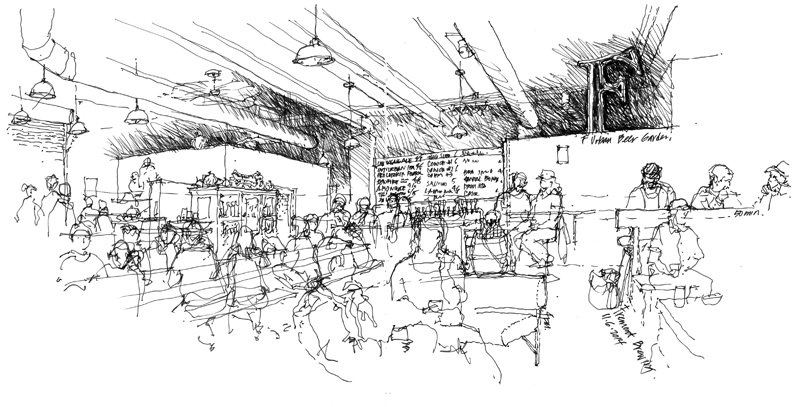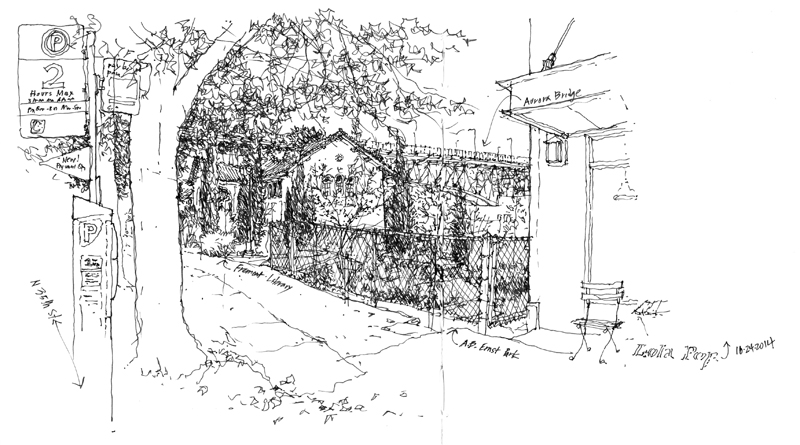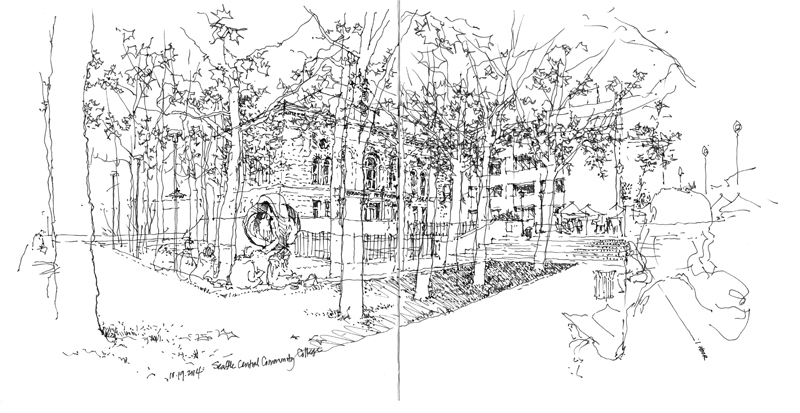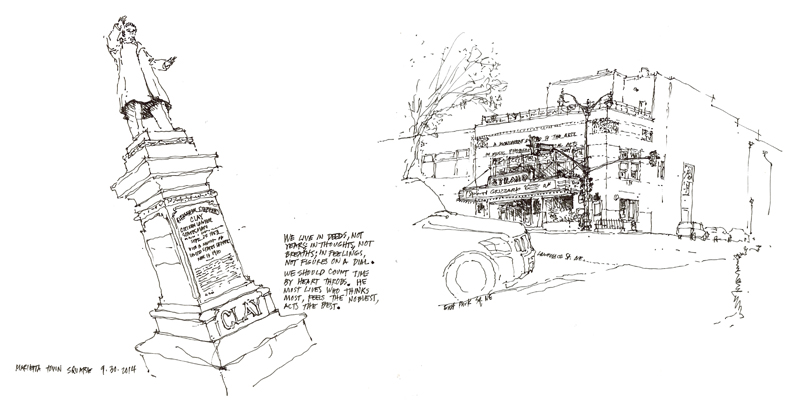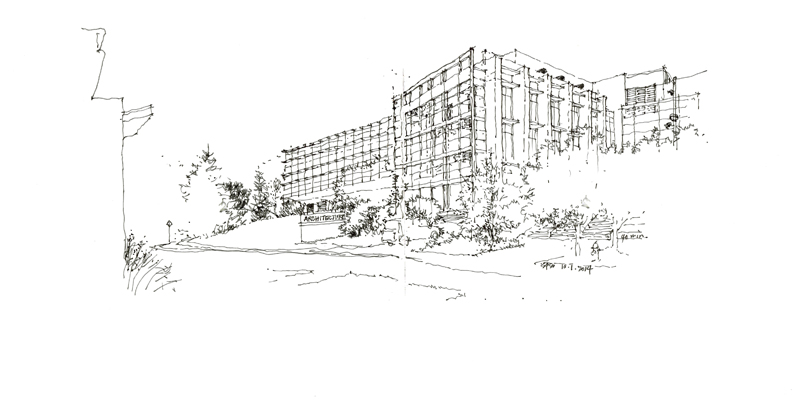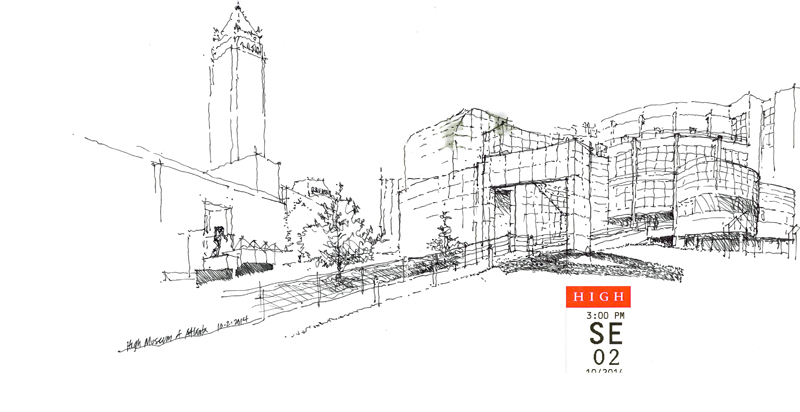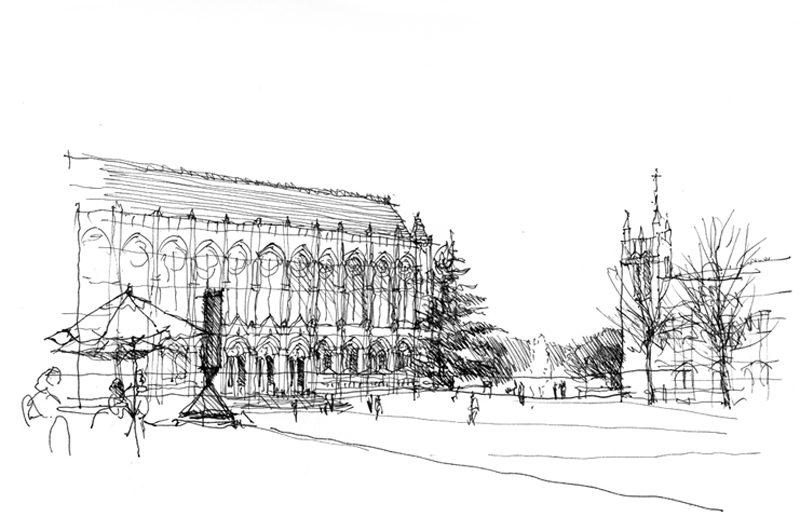
Back in 2010, a number of videos were shot of me drawing scenes on the UW campus. Here is the sketch I did of Red Square with Suzzallo Library in the left background, Gerberding Hall to the right, and a table setting and Barnett Newman’s sculpture, Broken Obelisk, in the foreground. During a break in the rainy weather we’ve been having the last few days, I again went to draw Red Square, this time drawing a slightly different view with my iPad Mini and the Brushes app.
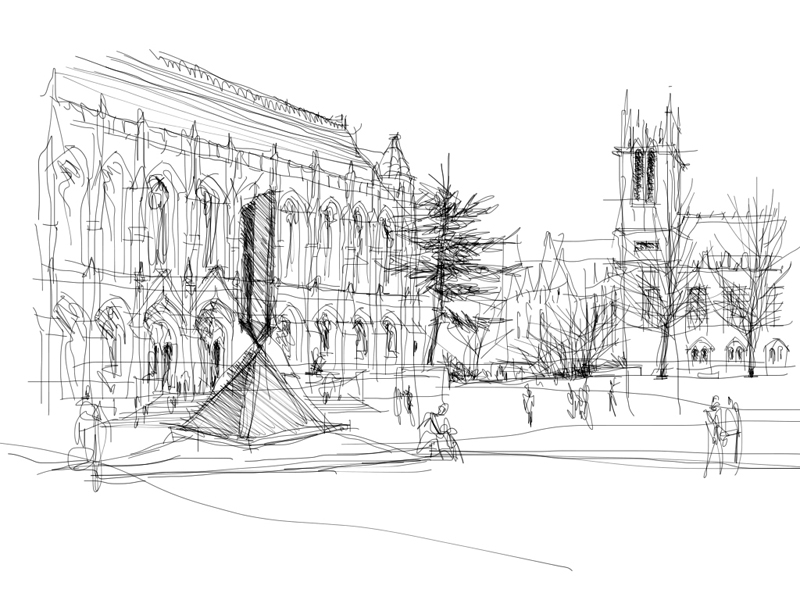
Drawing with my forefinger on a glass surface that is only 6.25 x 4.75 inches in area fosters the use of more gestural strokes and inhibits the drawing of fine details. Even though the strokes are only one pixel wide, I found myself suggesting rather than describing because I wasn’t willing to constantly zoom in and out and painstakingly work pixel by pixel. I’ve tried a number of styli but haven’t found one that is a reasonable substitute for the nib of a fountain pen due to the nature of the capacitive touchscreen display.
Still, the overall process of establishing perspective structure first before adding tones and details remains the same as when drawing with a pen on paper. I hope to show this when I export the data and convert the actions into a Quicktime movie.

